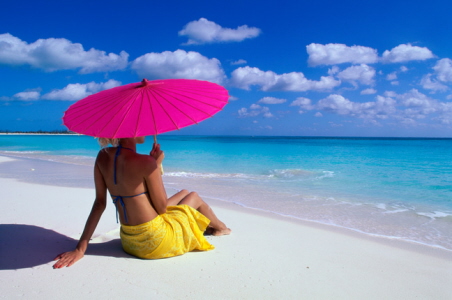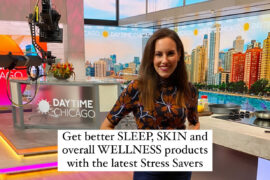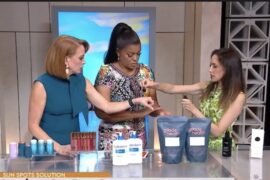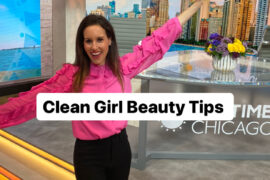
I’m a stickler for sunblock. Especially as I approach my mid-thirties, damage from past burns like the one I got in my 20s during a family vacation in the Caribbean is now coming back to haunt me. Damn brown spots! My grandma always told me to stay out of the sun even when others said a little tan made my pale complexion look healthy. She knew what was up. Wearing SPF should be as habitual as wearing your seatbelt. So, just as I did last summer, I’m not letting this one slide by without introducing you to the latest blocking formulas that would make my grandma proud.
Mineral Suncreen
“Mineral” has become a buzzword in the beauty industry. Every big brand from CoverGirl to L’Oreal has launched a natural line to capitalize on this trend. Sunblocks are no exception. They’re the latest response to people questioning the safety of traditionally used chemical formulas. While studies haven’t proven that the chemicals are harmful to our health, these options are a good alternative for those who believe the jury is still out.
Alba Botanica Fragrance Free Sunblock Mineral SPF 30. Offers UVA/UVB protection and is formulated with aloe vera, green tea and chamomile to soothe sensitive skin.
Clarins UV Plus HP Day Screen. This new non-greasy formula could double as your daytime moisturizer. It’s light, absorbs quickly and doesn’t leave any residue behind.
Beach Day Favorite
We all have a go-to sunscreen that we buy time and again, season after season. My tried and true favorite is La Roche-Posay Anthelios SPF 60. Having had such success with this sunblock, I got my mother-in-law to try it. She’s the woman you’d mistake for a beekeeper at the beach, and it’s proven so effective, she’s stripped off a few of her layers of SPF protective clothing and now buys it in bulk! It comes in a cream, which I like for beach days, and a lightweight fluid. As expected, the brand has also launched a nice mineral block (Anthelios 50 Mineral), but my loyalty remains with the original.
Note: For the iPhone users out there, check out La Roche-Posay’s new app called “MY UV Check.” You enter your location and it tells you the index for the day’s UVA and UVB exposure. Pretty cool!
Wet Skin sprays
Nowadays, practically every new beauty product has a groundbreaking technology. Winter introduced a mess-free way to color your hair at home using a foam mousse. This summer’s technology du jour is found in the new “wet skin” blocks. The formulas are easier to apply than ever because they can be sprayed directly on wet or sweaty skin. Both Neutrogena Wet Skin Sunblock Spray SPF 85+ and Aveeno Hydrosport Sunblock Spray SPF 85 are convenient to apply after a dip.
Sunblock + Skincare
If you’re looking to repair sun damage as it’s happening, Neova DNA Damage Control blocks rays with zinc oxide and contains marine plankton that the company claims has been clinically proven to reduce DNA damage by 45% in one hour.
NEWSFLASH: The FDA just announced new regulations for the sunscreen industry that will go into effect next summer. Here’s what to expect:
1. More accurate labeling to show you how much protection you’re getting from both UVB (burning) and UVA (aging) rays. In the past, companies have been able to claim a high SPF simply based on the measure of UVB protection. If a sunblock doesn’t live up to the requirements that would provide broad spectrum protection, which means it fights both UVA and UVB rays, a warning on the packaging will have to state that the block is not shown to protect skin cancer or early aging.
2. The terms sunblock, waterproof and sweatproof are disappearing. These give consumers a false sense of protection and will be replaced with more humble descriptors such as water resistant.
3. SPFs over 50 may be banned. The reason being that high SPFs like 100 are misleading consumers to believe they’re getting way more protection than they actually are. As a result, people aren’t applying enough product or reapplying as often as they should.




Comments are closed.